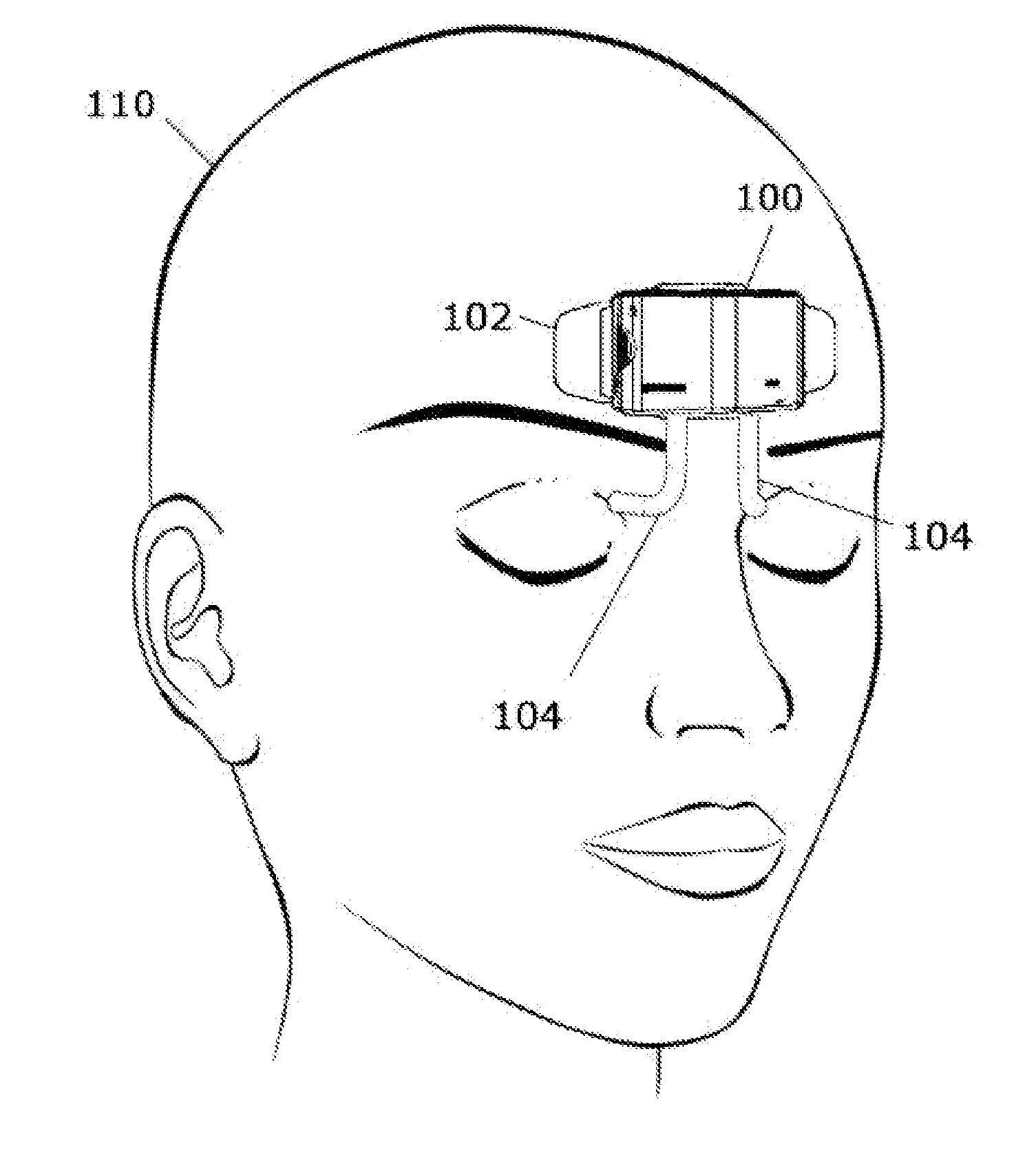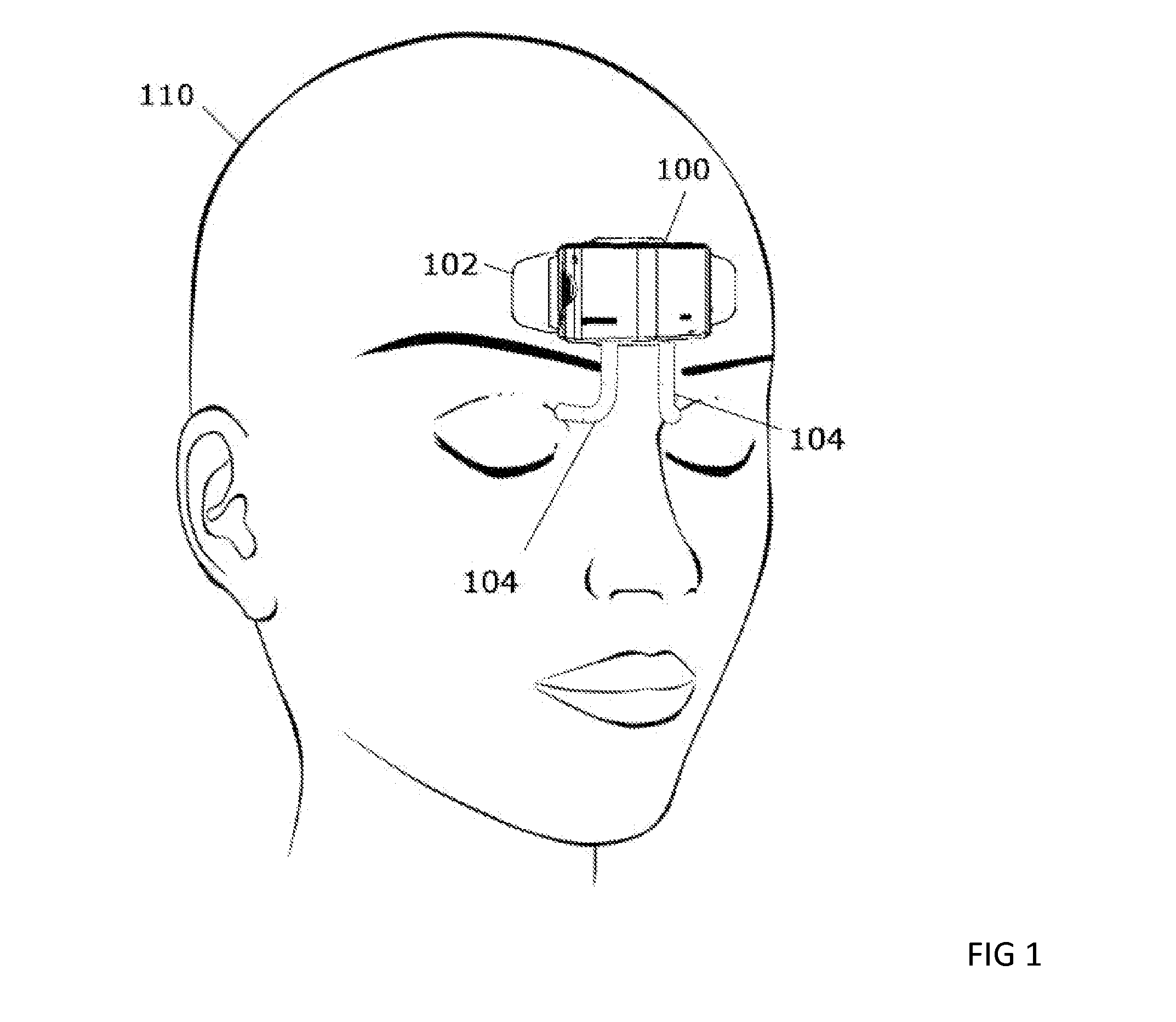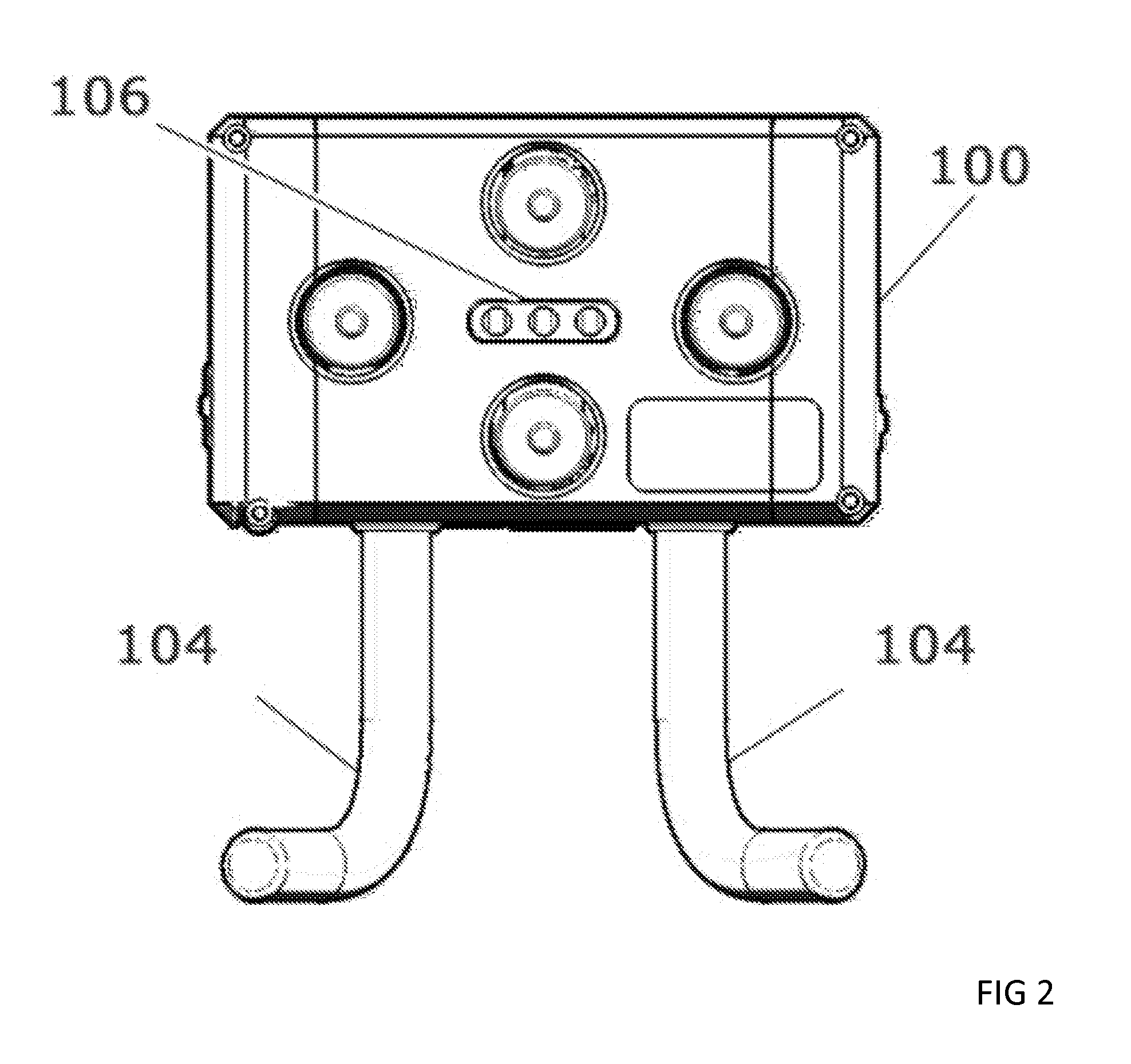Forehead-wearable light stimulator having one or more light pipes
a technology of light stimulators and foreheads, which is applied in the field of wearable light stimulators, can solve the problems of affecting the patient's sleep quality, and the requirement for the patient to keep his/her eyes open is even more problematic, and achieves the effect of precise positioning of the stimulator and more freedom in the structure and placement of the stimulator
- Summary
- Abstract
- Description
- Claims
- Application Information
AI Technical Summary
Benefits of technology
Problems solved by technology
Method used
Image
Examples
Embodiment Construction
[0052]In FIG. 1, a user 110 is shown wearing a light stimulator 100, the stimulator being affixed to the forehead of the user 110 by means of an adhesive electrode patch 102. The light stimulator 100 includes two light pipes 104, which transport light emitted within the apparatus 100 to the user's 110 eye lids.
[0053]In FIG. 2 and FIG. 3, the light stimulator 100 and light pipes 104 of FIG. 1 are shown in detail from two different angles, with the supporting electrode patch 102 removed for clarity. A pulse oximeter 106 allows monitoring of the heart rate of the user 110.
[0054]Referring to FIG. 4, the light pipes 104 are removable, and are shown without the main body 100 of the light stimulator.
[0055]With reference to FIG. 5, two high-brightness full-color LEDs located inside the stimulator 100 emit light from two holes 500 located at the bottom of the stimulator's 100 enclosure. The transparent light pipes 104 are inserted into these holes. When the stimulator is affixed to the foreh...
PUM
 Login to View More
Login to View More Abstract
Description
Claims
Application Information
 Login to View More
Login to View More - R&D
- Intellectual Property
- Life Sciences
- Materials
- Tech Scout
- Unparalleled Data Quality
- Higher Quality Content
- 60% Fewer Hallucinations
Browse by: Latest US Patents, China's latest patents, Technical Efficacy Thesaurus, Application Domain, Technology Topic, Popular Technical Reports.
© 2025 PatSnap. All rights reserved.Legal|Privacy policy|Modern Slavery Act Transparency Statement|Sitemap|About US| Contact US: help@patsnap.com



